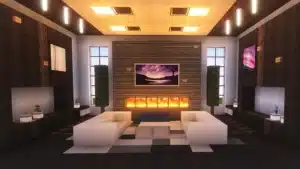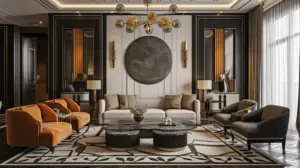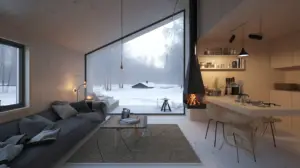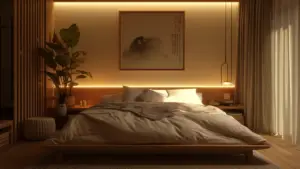Free Shipping On All Orders
15 European Interior Design 2024 You Will Love
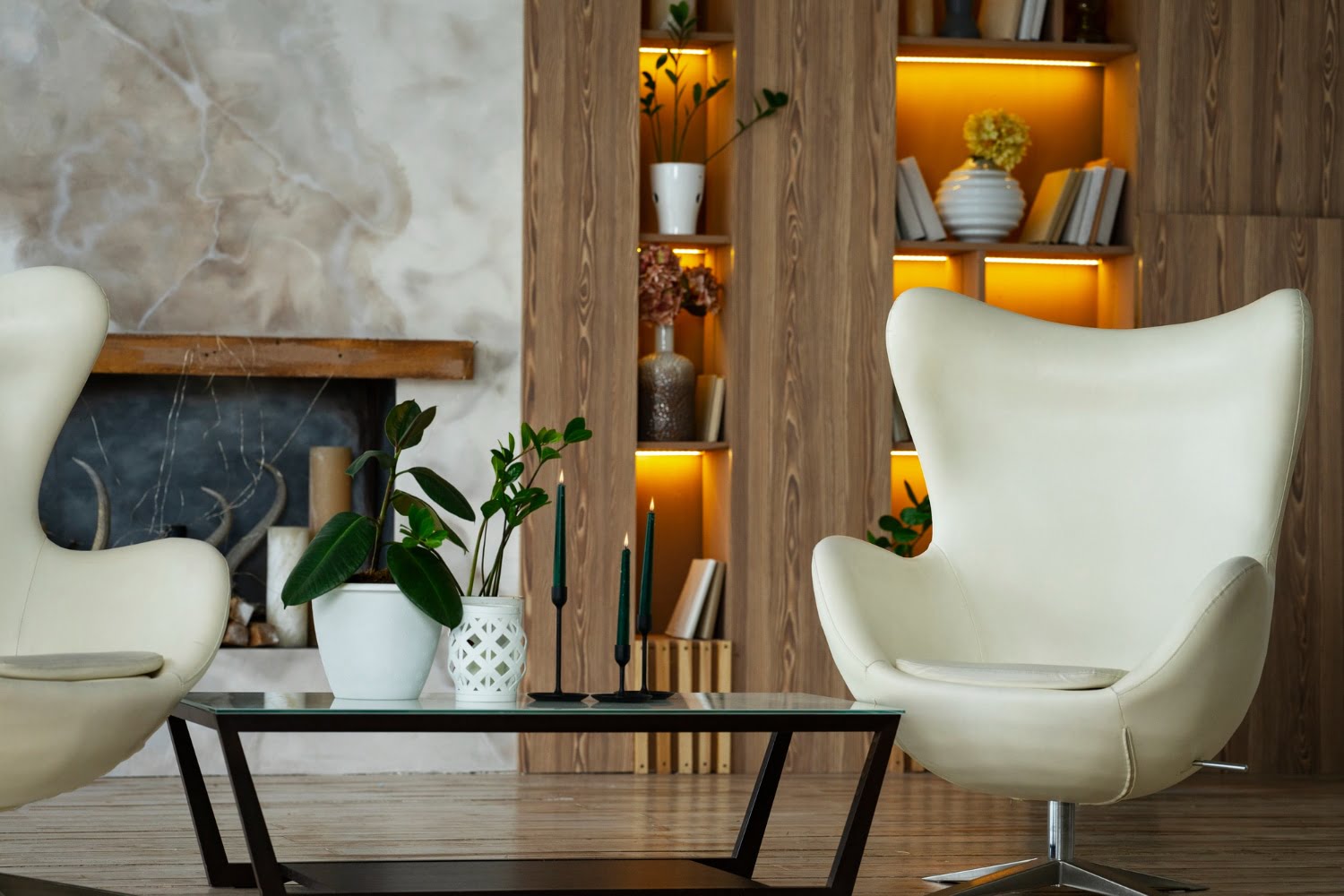
European interior design is an all-encompassing term that captures a broad range of styles, traditions, and cultural influences from various European countries. As diverse as the European continent itself, the unique design principles appeal to modern homeowners worldwide. Do you want to bring some European flair into your home? Let’s delve deeper into this enchanting world of interior design.
Throughout history, European interior design has evolved, transforming itself with each passing era. The rich history of art, architecture, and cultural influences gave rise to some of the most iconic design styles, such as Neoclassical, Baroque, and Art Deco. Understanding the origins and elements of these styles will enable you to incorporate them into your living space with an authentic touch.
Today, European interior design continues to inspire and adapt to contemporary trends while retaining its cultural heritage. Merging modern materials with traditional techniques, it offers endless possibilities for creating spaces that are both sophisticated and inviting.
Key Takeaways
- European interior design encompasses a wide range of styles stemming from diverse cultural influences.
- Historic design styles such as Neoclassical, Baroque, and Art Deco remain popular in modern interiors.
- The fusion of traditional and contemporary elements allows European design to maintain its relevance in today’s homes.
Origins of European Interior Design
Renaissance

The Renaissance marked a significant shift in European interior design. During this period, emphasis was placed on symmetry, proportion, and geometry. The beauty of Renaissance design lies in its harmonious blend of art and science. You’ll often spot open floor plans, grand entrances, and symmetrical facades in Renaissance interiors.
Some key elements include:
- Use of columns, pilasters, and arches in interiors
- Fresco paintings and murals on walls and ceilings
- Intricately carved wood furniture
Baroque

Baroque interior design emerged as a response to the restraint and order of the Renaissance. This style showcases opulence, grandeur, and dramatic contrasts. You’ll find Baroque interiors rich in lavish materials, such as brocade, velvet, and silk. The ornamentation often involves gilded elements, oversized paintings, and intricate sculptures.
Key features to note:
- Curved lines and irregular shapes on walls, ceilings, and furniture
- Use of mirrors and gilding to create an element of grandiosity
- Bold, contrasting colors and luxurious fabrics
Rococo

Rococo design took the extravagance of Baroque to another level, focusing on the intricate and whimsical. This style is characterized by its light, airy feel, and pastel color palette. Rococo interiors emphasize delicate patterns, ornate carvings, and asymmetrical designs.
Influential aspects of Rococo design:
- Elaborate furniture with curved legs and intricate carving
- Wall panels adorned with intricate patterns
- Delicate, pastel colors, offset by gold accents
By exploring the origins of European interior design through Renaissance, Baroque, and Rococo styles, you can gain a deeper understanding of their individual influences and lasting impact on design trends across history.
Captivating Key Elements of European Interior Design
Color Palette
In European interior design, the color palette is often inspired by nature. Earth tones like beige, brown, olive-green, and grey create an essence of calm and serenity. Contrasting color schemes that incorporate vibrant hues, such as deep reds, blues, or gold, are also common in order to accentuate specific areas or pieces.
Furniture

The furniture in European-style interiors is typically classic, elegant, and full of character. You will find a mix of traditional materials such as rich wood, metal, and leather coming together to create a sense of timeless grandeur. Incorporating antique or vintage pieces into your space will add an air of history and sophistication. Don’t be afraid to mix styles – from mid-century modern to French provincial, combining different eras can give your space depth and personality.
Texture

Texture plays a vital role in European design. The use of a variety of fabrics, patterns, and finishes can create a visually appealing and stimulating environment. Upholstered furniture, layered curtains, and plush area rugs can add a sense of luxury and comfort to your space. To achieve the desired tactile harmony, consider incorporating rough wood surfaces, woven textiles, and smooth metals into your decor.
Remember, European interior design is all about balance, harmony, and richness. By focusing on these elements, you will create an inviting and elegant space that reflects the timeless appeal of European style.
Influence on Global Design
European Influence in Asia
European interior design has had a significant impact on Asian design trends. You can see various aspects of European design being seamlessly integrated with traditional Asian elements, creating unique and visually stunning spaces.
For instance, you‘ll notice the use of European-style furniture in many Asian homes, cafes, and even boutique hotels. The mix of European antiques with Asian artworks and textiles creates an eclectic, charming atmosphere that’s appreciated by many.
Another influence is the adoption of color palettes often associated with European design. Soft pastel shades and neutral tones are becoming increasingly popular in Asian interiors, providing a sense of tranquility and sophistication.
European Influence in America
Similarly, European design elements have found their way into American homes, with many homeowners opting for classic European styles or incorporating European accents into their spaces.
One key influence can be seen in the popularity of French and Italian country styles in-home décor. Rustic elegance, delicate patterns, and natural materials from these regions have captured the hearts of many Americans as they seek to bring the European flair into their daily lives.
You may also recognize the use of bold, rich colors associated with European design in American interiors. Deep hues such as emerald green and navy blue can often be found in luxurious living spaces, while neutral colors like gray and beige are commonly used to create a cozy, inviting atmosphere.
By incorporating European design elements in these various regions, you can see how your spaces can be both captivating and functional, and this global influence has undoubtedly contributed to a more diverse and enriched design landscape.
Contemporary European Interior Design
Minimalistic Design

When it comes to contemporary European interior design, minimalistic design plays a vital role. This approach focuses on creating spaces that are clean, uncluttered, and functional. To achieve this look, focus on incorporating neutral colors, simple shapes, and functional furnishings.
Key Elements of Minimalistic Design:
- Neutral colors such as white, grey, and beige
- Simple and geometric shapes
- Streamlined and functional furniture
- Adequate storage for a clutter-free environment
- Thoughtful use of accessories and lighting to create focal points
By incorporating these elements in your design, you’ll create a space that feels serene and calming, while still having a modern and sophisticated European flair.
Sustainable Design
Sustainable design has also gained prominence in European interiors. Its focus is on eco-friendly materials, energy efficiency, and a reduced environmental footprint. By embracing this design approach, you can create interiors that are both beautiful and planet-friendly.
Key Components of Sustainable Design:
- Use of natural and eco-friendly materials, such as wood sourced from responsibly managed forests
- Energy-efficient lighting solutions, such as LED bulbs
- Incorporating greenery in the form of indoor plants to enhance air quality
- Choosing furniture and furnishings made from recycled or sustainable materials
- Prioritizing energy efficiency in appliances and heating/cooling systems
By considering sustainable design practices, you’ll create an interior that is both stylish and environmentally friendly, capturing the essence of contemporary European design.
Designing With European Style
Choosing the Right Furniture
When designing with European style, selecting the right furniture is essential. Opt for classic pieces with clean lines, made from high-quality materials. Go for timeless items like antique armoires, elegant upholstered chairs, and sturdy solid wood dining tables. Remember to strike a balance between aesthetics and function, and always choose items that suit your space and personal tastes.
Incorporating European Elements
To further enhance the European touch, incorporate various elements from different regions. Here are some ideas:
- Italian influences: Add a touch of luxury with marble countertops, sophisticated chandeliers, and ornate mirrors
- French charm: Choose soft pastel colors, vintage accessories, and romantic floral patterns
- English coziness: Add deep, plush sofas, warm wood accents, and a classic fireplace
- Scandinavian simplicity: Incorporate minimalist designs, functional storage solutions, and natural materials like wood and stone.
While designing with European style, mix and match elements from different regions to create a unique and personalized look. Remember, it’s all about balance and expressing your individuality, so don’t be afraid to experiment.
5 Surprising Misconceptions about European Design
You might think you know European interior design, but there are some common misconceptions that can lead you astray. Here, we’ll dispel five of those myths and set the record straight on European design trends.
- any people assume that European design exclusively refers to classical styles like Baroque, Rococo, and Renaissance. Although these styles play a significant role in European design history, they don’t represent the full range of options. Contemporary European design includes minimalist, modern, and Scandinavian styles, showcasing the region’s diversity and innovation.
- Another misconception is that European design is always expensive and luxurious. While it’s true that certain styles prioritize opulence, many European designers value functionality and affordability. IKEA is a prime example of a European company democratizing design and making it accessible to the global market.
- A third myth is that all European design is the same. Europe is a vast continent with diverse cultures, and each country brings its influences to the world of design. Italian, French, and British designs all have distinct characteristics that set them apart from one another. It’s essential to appreciate these nuances to understand and appreciate the richness of the European design landscape.
- The fourth misconception is that European design is always formal and elegant. While elegance is a hallmark of some European styles, others take a more casual approach. Rustic, cottage, and coastal styles from Europe demonstrate a comfortable and laid-back aesthetic. These designs feature natural materials, earthy tones, and a subtle sense of warmth and charm.
- Lastly, some people believe that incorporating European design elements into your home requires you to overhaul your entire space. In reality, you can introduce European accents with simple, subtle additions like European-inspired furnishings, lighting fixtures, or textiles. Mixing and matching different elements from various European styles can help you create a unique, personalized look in your home.
The Top 5 Emerging Trends in European Interior Design
As the world of design is continuously evolving, it is essential for you to stay informed and keep an eye on the future of European interior design. In this section, we will discuss the top five emerging trends that are shaping the industry.
- Sustainable and eco-friendly materials: With a growing focus on environmental responsibility, European designers are experimenting with innovative, eco-conscious materials. You can expect to see more furniture and décor crafted from recycled, renewable, and low-impact resources while maintaining high-quality aesthetics.
- Biophilic design: A significant trend in European interior design is the incorporation of nature into living spaces. Biophilic design aims to connect you with the natural world through the use of indoor plants, natural materials, and organic shapes. This concept not only creates a calming environment but also improves air quality and overall well-being.
- Embracing minimalism: The minimalist design trend has been steadily gaining traction across Europe. This style focuses on decluttering your space and using simple, functional elements to create a clean, modern look. Minimalism allows you to emphasize quality over quantity and showcase your personal style.
- Curating unique statement pieces: As the appetite for individuality grows, European designers are moving away from mass-produced pieces in favor of one-of-a-kind, artisanal creations. By incorporating these unique items into your space, you can express your personality and create a cohesive narrative that sets your home apart.
- Bold color and pattern combinations: European interior design is no stranger to bold colors and patterns, but the future will bring even more daring combinations to the forefront. Expect to see more vibrant hues, geometric patterns, and textured fabrics used in unexpected ways, bringing energy and depth to your living spaces.
By being aware of these emerging trends, you can stay at the cutting edge of European interior design and create a dynamic, inspired living space that reflects both your personal taste and the changing landscape of the industry.
Frequently Asked Questions
What are the most popular European interior design styles?
The most popular European interior design styles are French country, Scandinavian, and minimalist.
What are the basic features of European interior design?
European interior design is a mixture of contemporary and classic elements. It plays with contrasting colors and prioritizes comfort.
What are some classic decor details in European interior design?
Classic decor details in European interior design include plaster, molding, high ceilings, gold accents, herringbone floors, vintage artwork, and antique furniture.
If you liked this post about 2000s interior design, don’t forget to follow us on Pinterest so you don’t miss any more interior design news!


